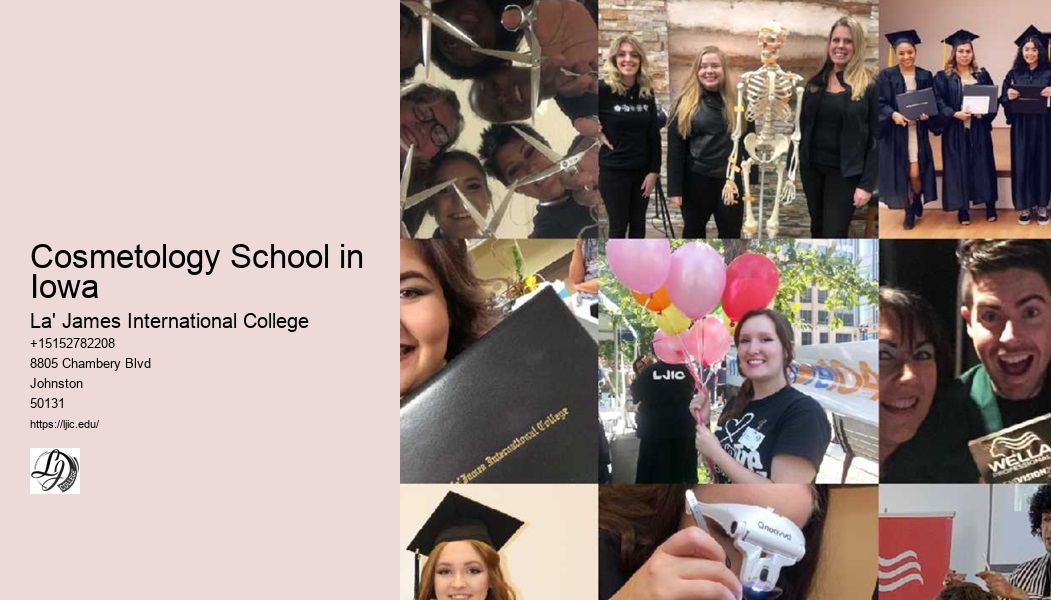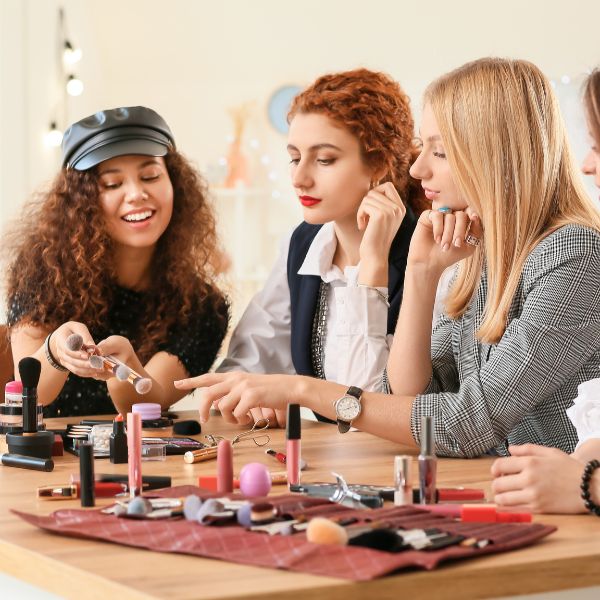

Choosing the right cosmetology school in Iowa is a pivotal decision for anyone aspiring to build a career in beauty. Whether you're drawn to hair, makeup, skincare, or nails, the school you choose will shape your skills, mindset, and opportunities for years to come.
Iowa is home to a vibrant beauty community and a growing demand for licensed professionals. If you’re searching for the best best cosmetology school in Iowa , La’ James International College stands out with a long-standing reputation for excellence, hands-on education, and career-focused training. Learn more on this page.. With a mix of urban centers and tight-knit communities, the state offers a unique environment for students to gain hands-on experience and client-facing practice.
A good cosmetology school in Iowa goes beyond textbooks and techniques.
Cosmetology programs typically include training in hair cutting, coloring, styling, skincare, nail technology, and makeup application. Tuition A comprehensive curriculum ensures students graduate with a versatile set of skills.
Hands-on experience is critical in this field. That's why schools often feature salon-style classrooms where students can perform services under supervision. This helps bridge the gap between theory and real-world service.
For many students, flexibility is key. That's why top cosmetology schools in Iowa offer both full-time and part-time options, allowing students to balance their education with work or family commitments.
Students should also consider a school's reputation, facilities, and state board pass rates. An institution with a history of success can give you an edge in a competitive job market.
One such institution with decades of history is La' James International College, which has been training beauty professionals since 1970. With campuses in multiple Iowa cities, it brings beauty education closer to home for many students.
From classic techniques to modern trends, students at reputable schools learn to adapt. Cuticle This is especially important in an industry that evolves with fashion, media, and technology.


Another important aspect of a great cosmetology school in Iowa is career support.
Licensing is a key milestone, and a good program helps prepare students for the Iowa State Board Exam. This includes both practical and theoretical training.
Financial aid can also play a role in selecting a school. Many Iowa institutions participate in federal student aid programs and offer scholarships to help reduce the financial burden.
Cosmetology isn't just a skill-it's an art. And like any artist, beauty professionals need the right tools, guidance, and practice to master their craft.
Some students know from the start that they want to specialize-maybe in esthetics or barbering. A solid school provides the foundation and flexibility to pursue those paths.
Makeup artistry, for example, is growing in popularity.

Nail technology is another exciting niche. From acrylics to gel designs, Iowa schools help students explore the creative and technical sides of nail care.
In addition to services, students also learn about sanitation, safety, and infection control-key components of a licensed professional's daily responsibilities.
Technology also plays a role in modern cosmetology. Schools in Iowa often teach students how to manage bookings, promote services online, and even build a personal brand.
SalonreadyAn often-overlooked benefit of attending a cosmetology school in Iowa is the local community.
Some schools offer externship programs with local salons and spas, giving students real-world exposure and potential job leads even before graduation.
At La' James International College, students benefit from industry partnerships and an alumni network that extends across the state and beyond.
Education is the transmission of knowledge and skills and the advancement of character traits. Formal education occurs within an organized institutional structure, such as public institutions, following an educational program. Non-formal education and learning additionally adheres to an organized technique yet occurs outside the official education system, while informal education and learning entails disorganized learning with everyday experiences. Formal and non-formal education are classified right into levels, including early childhood education and learning, main education, second education and learning, and tertiary education and learning. Other classifications focus on teaching approaches, such as teacher-centered and student-centered education and learning, and on topics, such as scientific research education, language education and learning, and athletics. In addition, the term "education" can denote the frame of minds and qualities of informed individuals and the academic field studying educational sensations. The precise interpretation of education and learning is challenged, and there are arguments concerning the objectives of education and learning and the degree to which education and learning differs from brainwashing by promoting important thinking. These disagreements effect just how to identify, determine, and improve various forms of education. Basically, education mingles children right into culture by instilling cultural worths and norms, outfitting them with the abilities essential to become productive members of culture. In doing so, it stimulates economic development and raises recognition of neighborhood and worldwide issues. Organized establishments play a significant duty in education and learning. For instance, governments develop education and learning policies to identify the timing of school classes, the educational program, and attendance needs. International companies, such as UNESCO, have been significant in advertising key education for all youngsters. Many aspects influence the success of education and learning. Psychological variables include motivation, knowledge, and character. Social variables, such as socioeconomic condition, ethnic culture, and gender, are frequently connected with discrimination. Various other factors incorporate accessibility to educational technology, instructor high quality, and parental involvement. The key academic area analyzing education is referred to as education researches. It looks into the nature of education, its purposes, influences, and methods for improvement. Education studies includes various subfields, including viewpoint, psychology, sociology, and economics of education and learning. Furthermore, it discovers subjects such as relative education and learning, pedagogy, and the background of education and learning. In prehistory, education primarily took place informally with oral interaction and replica. With the emergence of ancient human beings, the creation of composing caused an expansion of expertise, triggering a transition from casual to formal education. Originally, official education was mostly accessible to elites and religious groups. The development of the printing machine in the 15th century facilitated extensive access to publications, hence raising basic literacy. In the 18th and 19th centuries, public education and learning got importance, paving the way for the global activity to offer main education to all, free of charge, and compulsory approximately a specific age. Presently, over 90% of primary-school-age kids around the world attend primary college.
.Massage is the massaging or rubdown of the body's soft cells. Massage therapy techniques are commonly applied with hands, fingers, elbows, knees, lower arms, feet, or a tool. The purpose of massage therapy is normally for the therapy of body anxiety or pain. In English-speaking European countries, a person properly educated to provide massage therapies is typically called a masseur (male) or masseuse (woman). In the United States, these people are frequently referred to as "massage therapy therapists" In some provinces of Canada, they are called "signed up massage specialists. ". In professional settings, clients are dealt with while resting on a massage therapy table, sitting in a massage therapy chair, or resting on a floor covering on the flooring. There are various modalities in the massage therapy industry, consisting of (however not limited to): deep cells, manual lymphatic drain, medical, sports, architectural integration, Swedish, Thai and set off point.
.In many cases, homeowners insurance will cover roof replacement if the damage was caused by a covered event, such as a storm or fallen tree. We can help document the damage and work with your insurer during the claims process.
The cost to replace a roof varies widely based on size, material, and complexity. On average, homeowners can expect to spend between $6,000 and $15,000. We provide free estimates so you know exactly what to expect.
The lifespan of a new roof depends on the material. Asphalt shingles typically last 20�30 years, while metal, slate, and tile roofs can last 40 years or more with proper care and maintenance.
During a roof inspection, we check for leaks, damaged shingles, mold, proper ventilation, and structural integrity. We�ll then explain our findings and give honest recommendations�whether that�s a quick fix or a full replacement.